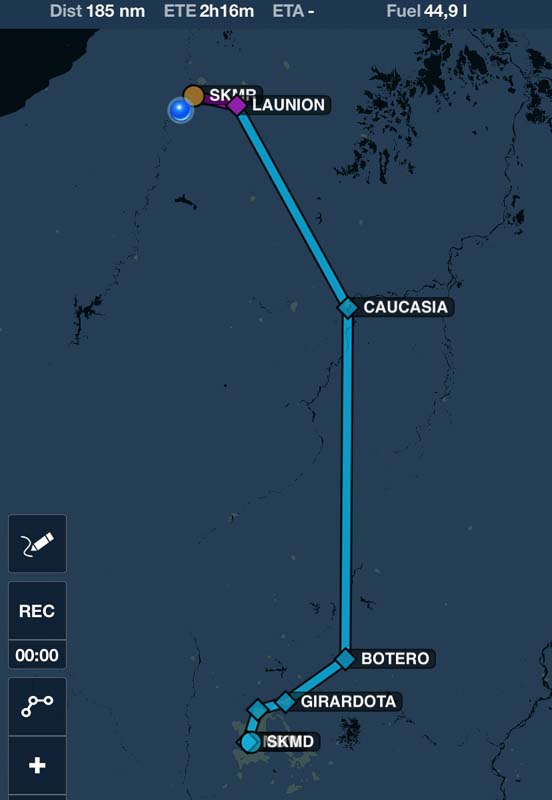
The flight from Monteria (SKMP) to Medellin (SKMD) via the canyon route.
Still March 8th: Took a taxi from Monteria airport to a mid-range category hotel. Friendly hotel staff. Nice hotel, but in a bad area, it seems. The entrance to the hotel was always locked. You had to ring a bell to get in. Monteria is terrorized by gangs, Wikipedia says. There are problems with criminals in all the big cities at the coast, someone from the AeroClub in Medellin told me later. After sunset, I strolled through the city. People sat with plastic chairs on the sidewalks, talking, laughing, eating, enjoying themselves. Much smaller than Barranquilla, Monteria has a slower pace. Still a city, not a village. But I didn't feel safe. It felt like walking through a bad neighborhood in central Africa. Back in the hotel I absorbed all the information I received from AOPA and the AeroClub about the leg to Medellin. Fly early! Don't go direct, take the canyon route! Don't press it. If you get IMC, turn around, fly to Amalfi, even if you don't have a permit for it. My next leg was certainly one of the most challenging of the whole trip.

September 9th. Monteria airport opens at 6:30 and that is the time, I arrived there. In Colombia, they take your picture all the time. Each airport gives you an ID card - every day. Patiently you wait in line with all the other people needing an ID card, until they scan your passport, take your picture and produce your ID card. Paid my fees, made it through security, filed my flight plan and was airborne at 8 AM.
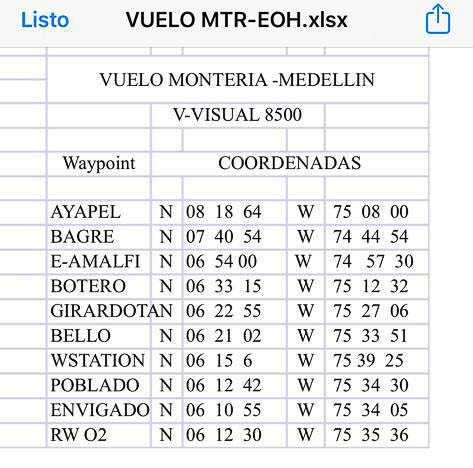
It was hazy. Monteria is still sea level, but after an hour flight time, the terrain rises rapidly to 8000 ft. I climbed above the haze, it was nice in 10500 ft, the highest I normally go. I learned that in Colombia you usually file waypoints with speaking names like LA UNION or MONTELIBANO. Foreflight didn't know them, only the AirNavigation VFR chart knew them, so I entered all the waypoints for the canyon route into Foreflight as user defined waypoints, similar like we did in the early 1990s in the days of INS and OMEGA.
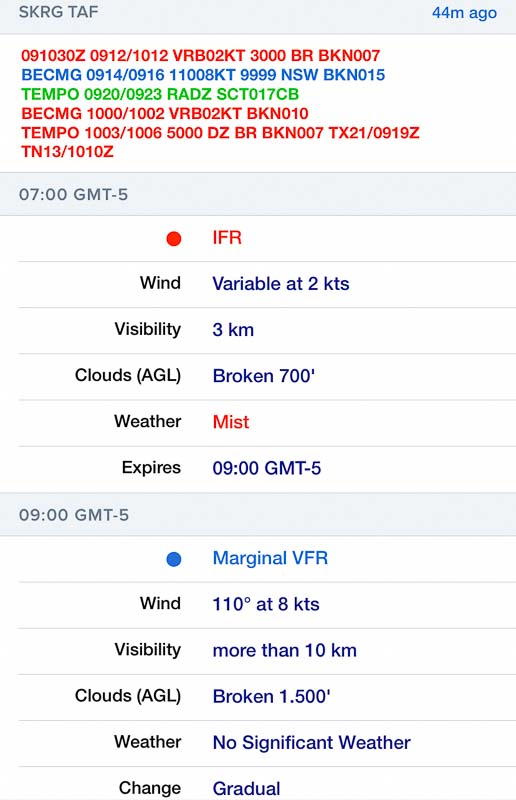
My jerry cans were full. This wasn't planned, it was a mistake. I wanted to empty then, before going into the mountains, because in the mountains I want to be light, not heavy, to have a better climb rate. But what do you do with 14 gallons of Avgas, spill it on the concrete? Try to sell it to the police flying the Cessna 206? I decided to fly high. If you fly high, mountains and good climb rates are no issue. The advantage of flying high is, that you can fly direct, over the mountains. You don't have to follow the valleys. Your route is shorter. This moves your point of safe return to the departure airport closer to the destination, which is another big advantage. Remember, the Colombian permit states only a few airports you are allowed to use. Fly to another airport and get fined. I filed an alternate. Colombia seems to require, that you file an alternate on VFR flightplans. Mine was Rionegro (SKRG). But as already stated, I didn't want to go there, due to the high elevation. Today, additionally, the weather there was bad, broken clouds in 700, hazy below. Nearly impossible to get there legally, when coming from the north, as the mountain tops surrounding it are in clouds. Endurance of the 140 is between 4 hours and 4:30, depending on power setting. Point of safe return therefore is between 1:45 and 2 hours. (If no wind)
After 1:45 I was still flying in 10500 ft (took me 1 hour to get that high) with a solid layer below me and more and more clouds appearing ahead. After 1:50 it became impossible to maintain VMC and I decided to turn around and fly the shortest way back to Monteria. Landed there after a flight time of 3:30 with about 45 minutes of fuel left. I decided to have lunch.
What went wrong? What could I make better? Will the weather improve? Weather in the morning and afternoon differs usually significantly. The mornings are hazy, but cool and thunderstorms are less frequent. The afternoons are warmer, more turbulent and thunderstorms are more frequent. But every day is different. The weather information didn't indicate much of a change. The pilots in Medellin, who knew I tried to come today, sent me all kind of advice and information and this helped also. I decided to try again. This time lighter, as I had refueled my plane by emptying the jerry cans. So I could go low, but unfortunately in-direct, with an early point of safe return.
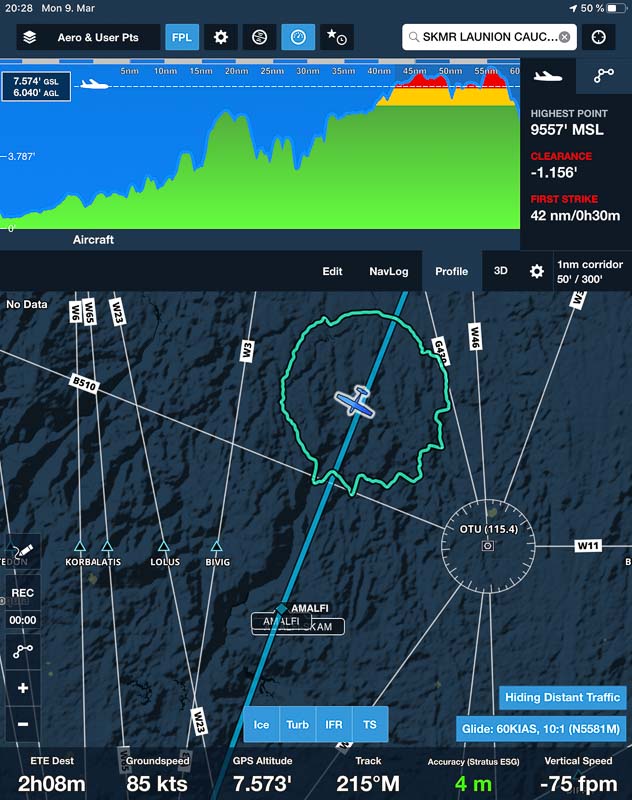
I stayed in 8500. The morning haze was gone. Lots of clouds above me, but only a few at my altitude and none below. With ground visibility, it was interesting to see the terrain climbing up towards me.
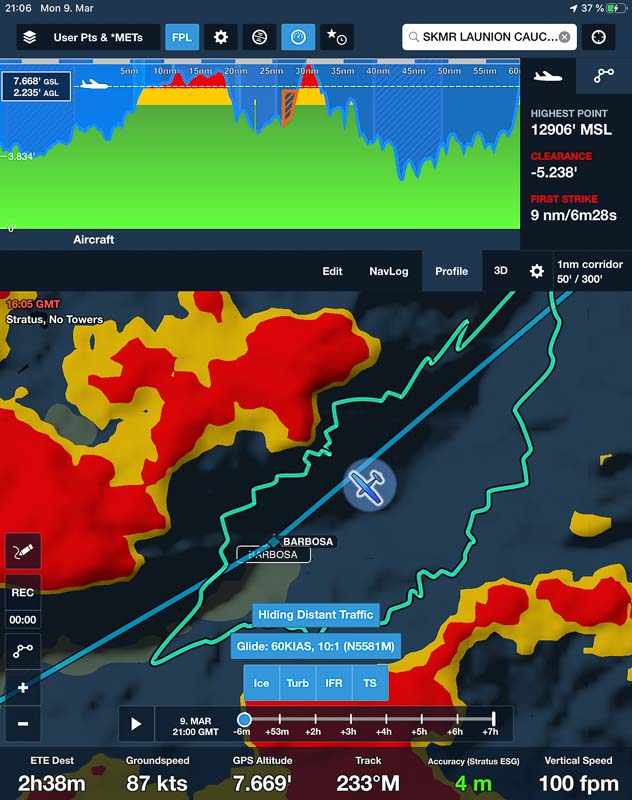
It is called the canyon route, because just north of Amalfi the Rio Medellin breaks out of a canyon and you follow this canyon (and the rio) until Medellin. If you don't lose this river, there is not much which can go wrong. The mountains are on both sides, but especially on your right side, they are higher than you.
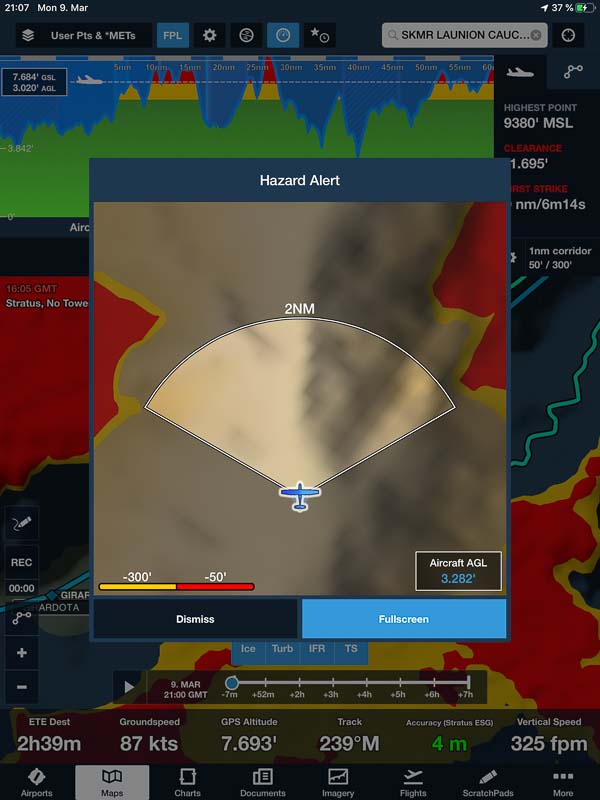
Foreflight's hazard advice had to be acknowledge all the time. Just be sure to follow the right river, there are a few bends, where another river comes in. If you have good certified equipment and a high performance aircraft, then flying the canyon route in IMC may be adequately safe (but of course illegal), but in my 140 it would be unsafe.

But I had VMC, so it was safe. If a cloud appears after the next bend, reaching all the way down to the river, I can turn around. The 140 has a tight turn radius and the canyon is not that narrow. But beyond the point of safe return to the departure airport, I would have to land in Amalfi, which is not in my permit. I don't know what happens then, but it is safe. I had options, so I could continue.
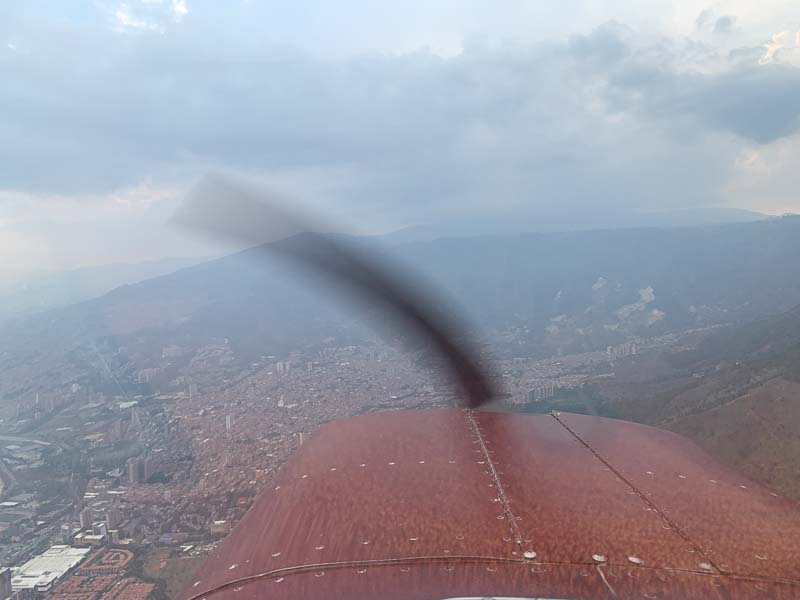
Just east of waypoint BELLO, the northern suburbs of Medellin begin.
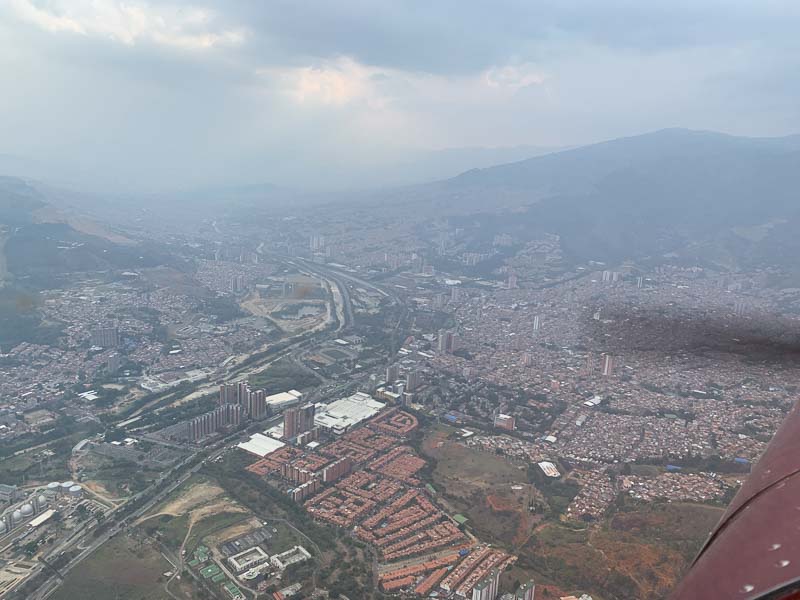
Medellin covers the whole valley. Skyscrapers and the houses of the upper class, have been built on the upward bound edges too. Medellin airport is in the middle of the city. It is a very old airport, opened in the 1930s. Carlos Gardel died here in 1935, when two Ford Tri-Motors collided on the runway. In the 1960s the biggest jets of this time landed there, but then Rionegro opened and Olaya Herrera was from that time on mainly used for domestic traffic, usually ATRs or small cooperate jets.
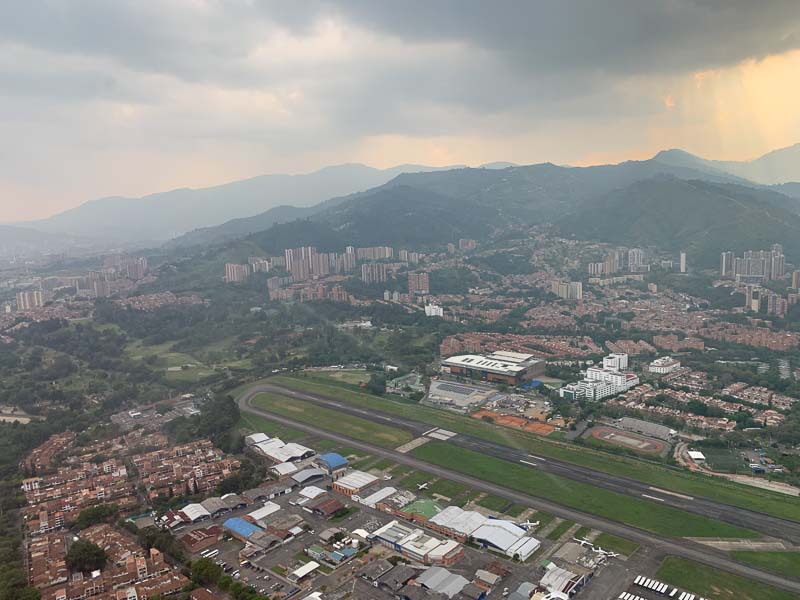
I expected to approach from the stadium, crossing mid-field but got instead a clearance direct right downwind 02. They use 02 most of the time, the departure sector of 20 is blocked by a hill.
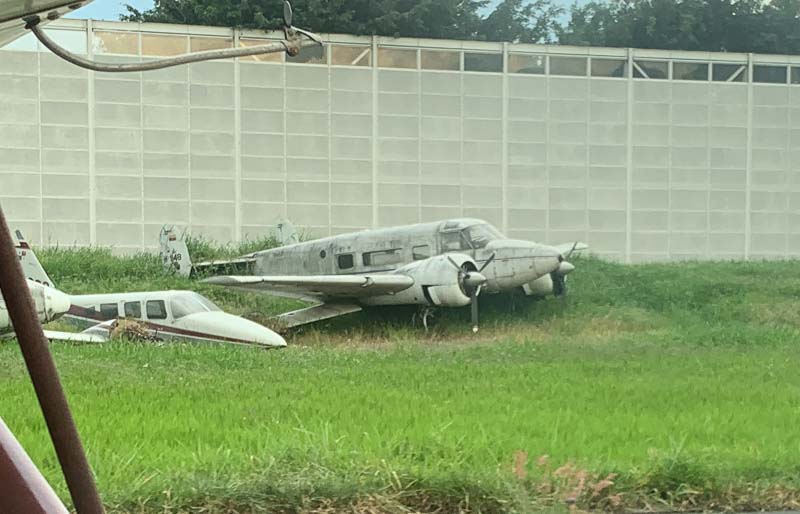
I was not proud of this landing, I somehow managed to bounce back into the air and hoped that nobody from the AeroClub witnessed this. But I was happy to be in Medellin, finally. A Beach 18 rotted next to the parallel taxiway. It belonged to a drug boss, I learned.

Wanted to taxi to the AeroClub, but had to go to the plataforma first. They checked my papers and searched luggage and aircraft for drugs. A friendly drug dog sniffed around. Members of the AeroClub welcomed me and it really makes a difference, if you are alone, arguing with the authorities or if you are supported by local pilots.
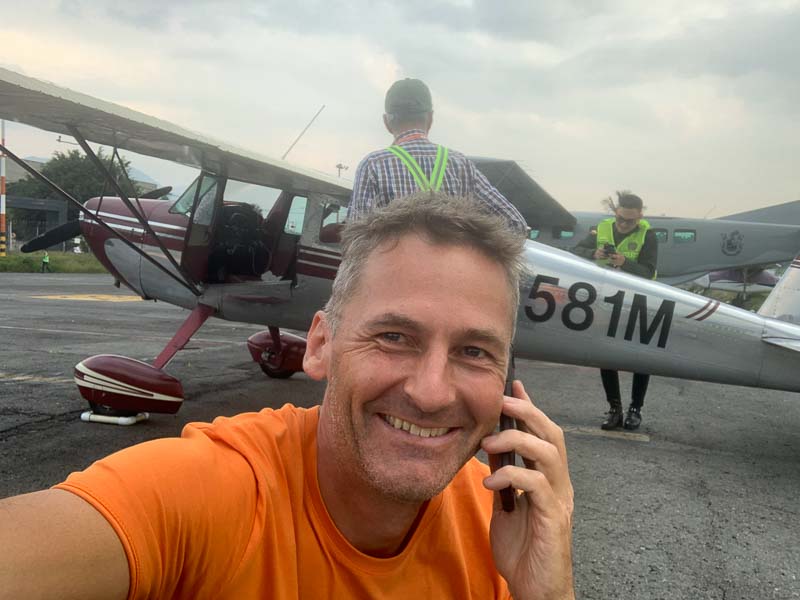
I learned that my aircraft is now grounded, because the (only) permission I possessed, had been cancelled by Aerosupport. This didn't bother me much, I wanted to stay in Medellin anyhow. In this moment, I didn't care about the future of my aircraft and my planned flights. I didn't care about Colombia and its regulations and permits. I just was happy, that I had safely reached Medellin and found friends here. I guess I was exhausted.

Claudia, one of the pilots who welcomed me, jumped into the 140 and we taxied to the hangars.
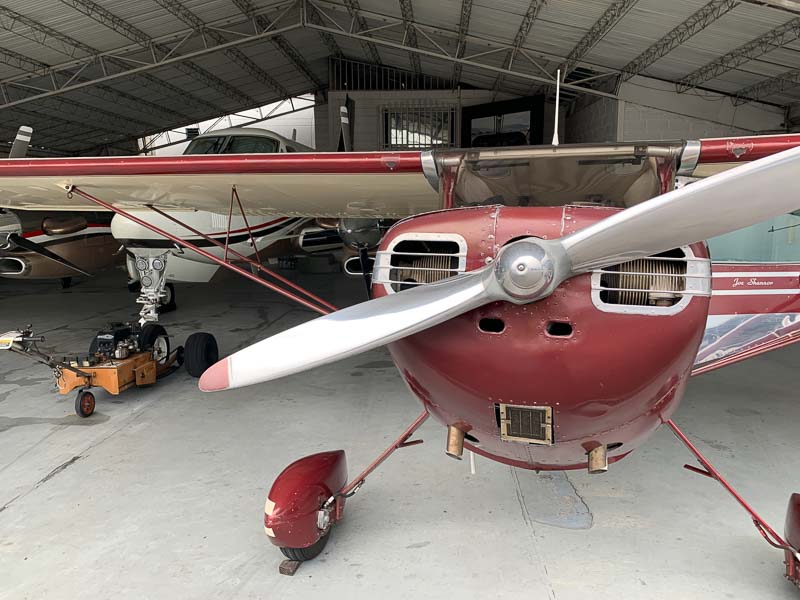
Carlos had offered to put the 140 in his hangar and it stayed there for two days.

In the office next to his hangar, the AeroClub requested new permits for me. Miguel and others spent many hours to fix the mess I was in. I am sure, also the authorities spent many hours with my case. So many regulations and pitfalls. Do the regulations produce any value? Is it worth the effort? I am used to work efficiently, but here I couldn't be efficient. I filled out the same lengthy form four times, printed, signed, scanned and mailed it. The workflow behind the form is not transparent. Alone, I would never have known, in case I would not receive a reply, if it was because I sent a document to the wrong address, or because I hadn't filled it out completely or because the internal review process is not completed. My case was difficult, because I was already in the country, while normally, a permit is requested, when you are still outside. The clocks were already ticking. I was no longer concerned about the 48 h rule, because I spent already three days in Colombia, now I was told that customs will seize my plane, if I have not left the country by the 13th, in 4 days from now. And my plane was still grounded.

But worries don't help. After I did everything I could do in this matter (which was basically giving all the data to Miguel and others from the AeroClub, who discussed my case with the authorities) I tried to enjoy myself in this amazing city.
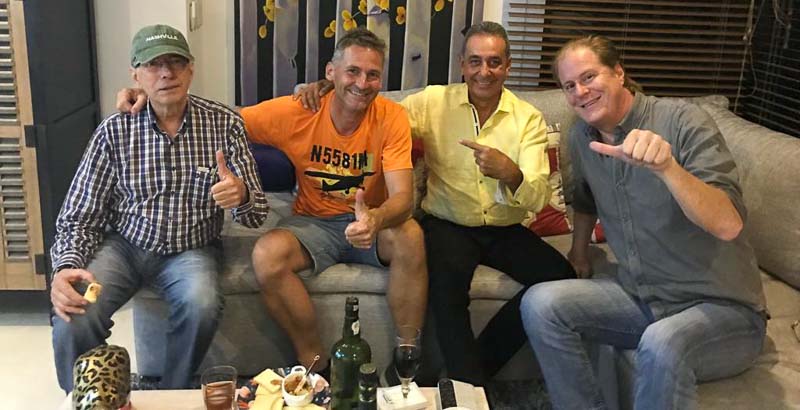
Got invited into the homes of pilots from the AeroClub. You are our hero, one of them said. No, I am not. I am just a pilot, who has enough time, to fly long distances.

March 10th. Spent the night in an amazing house. Some know how to live life. They showed me excellent restaurants and some of Medellin's landmarks. From a hill north of the airport, I planned my visual departure route. Elevation 4900 ft. Flight time to Cali only 2 hours 20 minutes, so I didn't top off the tanks and of course the jerry cans stayed empty. I used the hangar and cleaned the aircraft, removed all thrash in order to reduce weight. Emergency water? Not needed. The route to Cali is green, not a desert. A friendly mechanic helped me with some preventive maintenance and polished my aircraft. Wow! My new FBO, Caribean Flight Support, knew what they were doing. The permit to fly to Cali should arrive early tomorrow, they say.